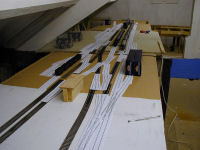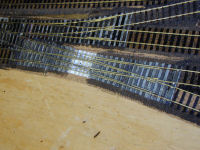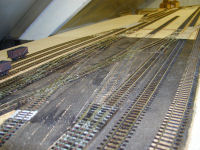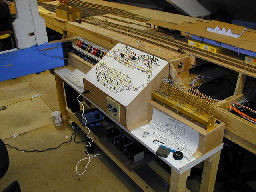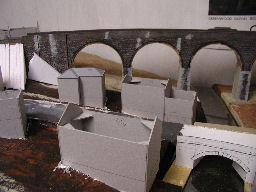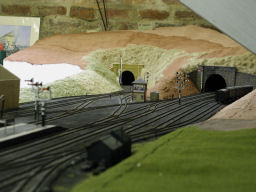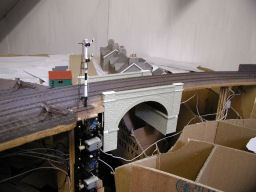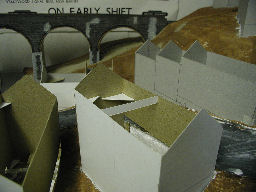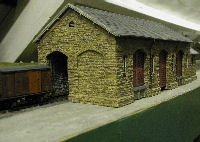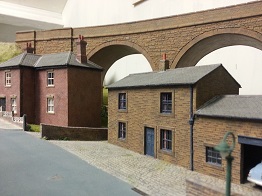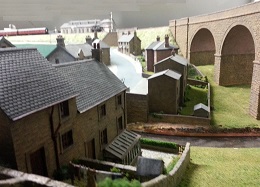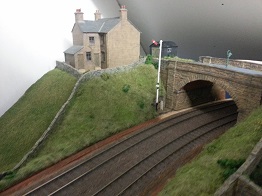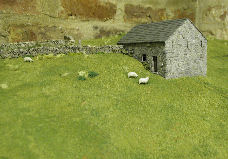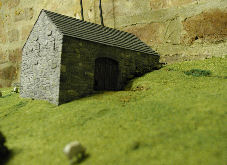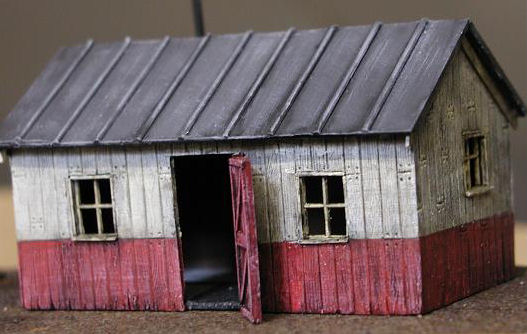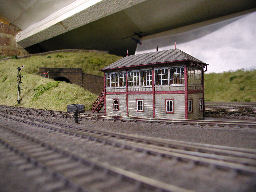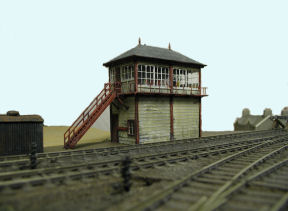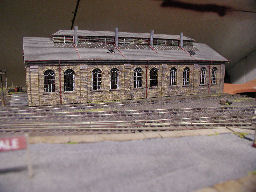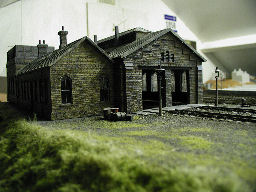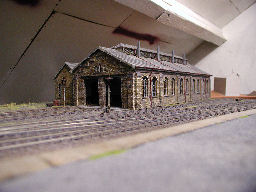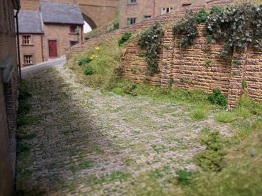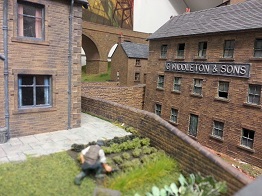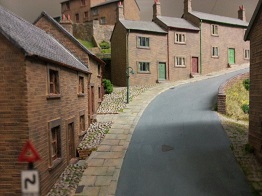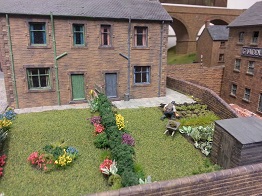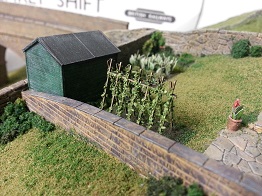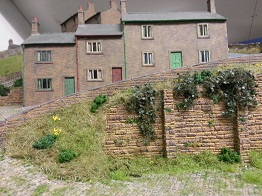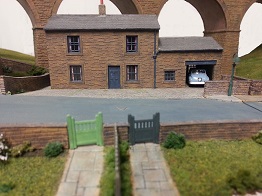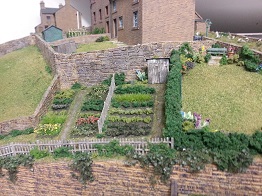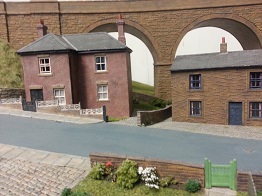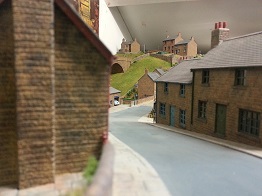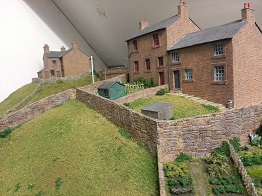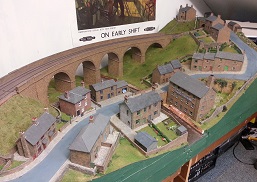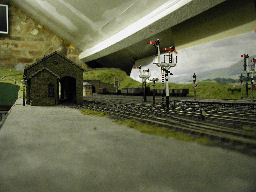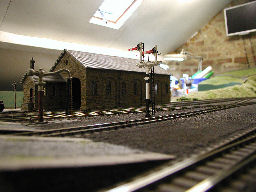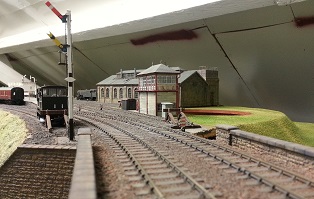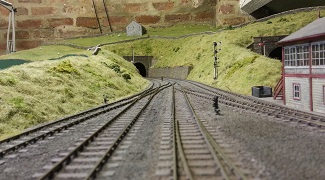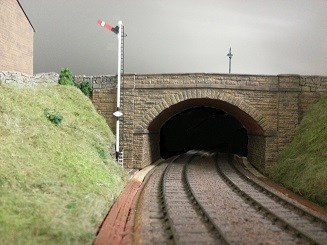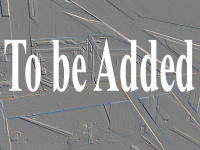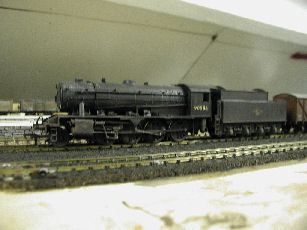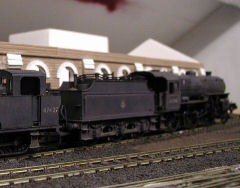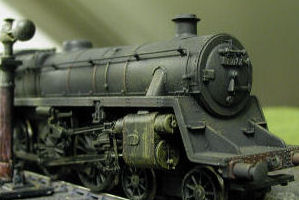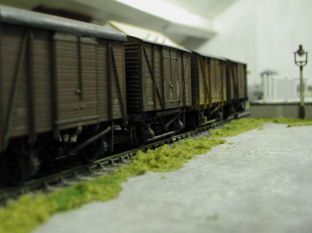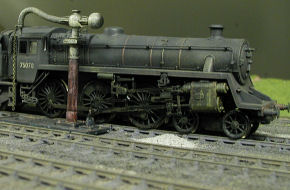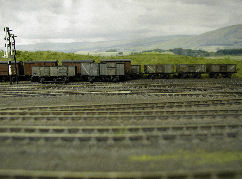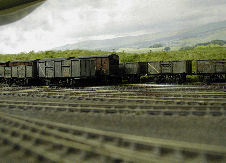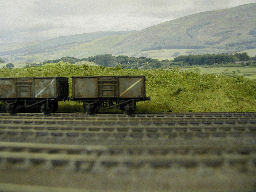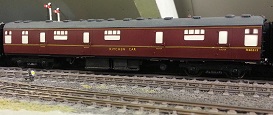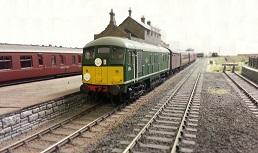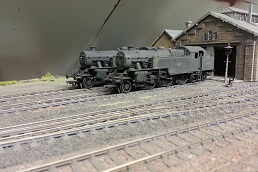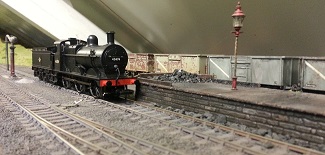My 4mm layout; Grisedale – Featured in Traction Magazine March 2016
Welcome to my site devoted to the construction of my 4mm finescale layout.
The object is to construct a layout based on a section of
the former
The model is based on the
assumption that the
The station architecture is based on Hellifield in Yorkshire, and I'm assuming that the Midland Railway architect who designed Hellifield also was responsible for the building at Grisedale.
There is a 2 road locomotive shed with coal and watering facilities. Goods facilities are represented a Midland Railway 3 wagon shed.
Trackwork is made from C & L components in the scenic section, and SMP, and Peco Streamline in the fiddle yard.
The vast majority of the locomotives, rolling stock, plasticard and kits have been supplied by Monk Bar Model Shop in York.
The target completion date for most of the layout is the end of 2020.
This site is under construction, and will evolve as time goes on
The following information is divided into sections:
Prototype & Planning
After working on a 2mm layout in 2000 (that was never finished), I decided
to return to 4mm in early 2002.
Previously to the 2mm project, I’d worked with 4mm on all my
layouts. In 1991, I completed “Cotterdale” (terminus to fiddle yard in 4mm) that was based
on the Hawes branch line. Cotterdale was completed within 18 months and did
everything it should, but became very unsatisfying in a short space of
time. Scenically, it was very pleased
with it, but I found that operationally, there was very little to it. I missed running a mainline (due to what I
had modelled before and witnessed on the full-sized railway).
I converted a large double garage at my home, adding an extra floor, insulation, electrics and skylights. This gave me roughly 23 x 10’ to work in.
My favourite period to model is 1958 – 65. This was a period of regeneration and saw the introduction of a lot of the first generation diesels. The London Midland region of British Railways has always been my favourite (mainly because I spent most of my childhood next to the Settle & Carlisle route).
Whilst thinking about a track plan, I looked through various books and
magazines in search of something typical that I could use. One plan in particular was very interesting
and that was “Dent Head Junction” on the late David Jenkinson’s Little Long
Drag 4mm layout. David had built a
layout assuming that the
I emailed David in early 2004 to ask if I could use his track plan and he replied “I have no problem with anyone using my track plans. They were drawn partly with this in mind and they do say that imitation is a sincere form of flattery!” He added “Good luck with the project. It sounds no more far-fetched than some of my ideas”. Naturally this then became the choice.
I’d been wondering about a name for the station taken from the area. I’d also put this to David. He suggested” If you want an alternative name, how about 'Grisedale'? This has a similar ring to it and is a small tributary valley which joins the main valley at Garsdale Head, almost opposite the actual location of Garsdale station. Just a thought............” So, the name Grisedale was born.
David originally had his little long Drag on an area 36’ in length, and although part of this was occupied by a viaduct, I had to compress a few things slightly and take out one or two points in the station area.
It was important to be scale length trains into the platforms, and using this as a starting point, I modified the track plan to suit within the space I had without cutting too many corners (track plan to appear on the site later).
I wanted to be able to have minimum radius curves of 4’ on the scenic side and 3’ on the rest. This I managed to achieve with the space available and it also meant I could have close coupled rolling stock.
The
architecture for the station building is based on the
Back to Top
Layout
Construction
Because I’m a member of the EM gauge society and have been modelling railways
for over 40 years, it was decided to hand build the track on the scenic side of
the layout.
I had originally planned to build the layout in EM gauge, but decided to construct it in 00 finescale. One of the major factors for this was that I have a lot of rolling stock with the 00 back-to-back measurements and straight out-of-the box Bachmann and Hornby Locomotives. However, EM and P4 gauges are more accurate and the track is easier to build because of the less sloppy wheel standards. On reflection I should have built it to EM gauge as I probably spent as much if not more time constructing it in 16.5mm finescale.
This layout will be my final offering in 16.5mm and I will probably rebuild it to EM gauge after two years running. I do have another small EM gauge layout I am working on but this is very much at the beginning stage. Photographs will follow later.
The entire track on the scenic section was made using a combination of C & L components combined with ply and rivet sleepers described by Iain Rice in his book “An introduction to Finescale Track.”
Various point and diamond templates were purchased from C & L Finescale. Most were used as they were, but others were modified for curves etc. Some pointwork was drawn out by hand where the situation demanded it.
The baseboards were made using a principle pioneered by Barry Norman in his book “Landscape Modelling”. This used a system of 6mm ply cut into strips sandwiched between blocks of pine. This makes the boards very light, and as most of mine were 5 x 3’, this was a necessity.
The trackbed rests on cork which in-turn rests on 9mm ply cut out to the shape of the track.
One of the problems encountered during the summer was some of the trackwork warped, even though I felt I had adequate insulation and ventilation. One thing I learnt was that when you hand build finescale track to got into an area where there is even a slight variation in temperature, you must leave adequate gaps between the joints.
Control for the trains is provided by Gaugemaster units with a combination of panel mounted and walkabouts.
For uncoupling purposes, electromagnets have been placed around the layout and suitably disguised. These are operated from a 16 volt supply and energised by push buttons on a control panel.
Back to Top
Buildings
At the time of writing, most of the buildings have been completed using embossed plasticard. I managed to get a copy of the original drawings of the locomotive shed from Hellifield from Network Rail, and I measured Hellifield station myself.
The viaduct dimensions are based on those from Appersett viaduct near Hawes (only I’ve made it for double track and not single). The viaduct itself is removable and made from ply and hardboard. I stuck on Wills embossed stonework as the photographs show.
Back to Top
Signalling
As signalling is an area of which I have considerable interest, I wanted to
have working signals operated from a leverframe.
The signals are combination of Alan Gibson, MSE and scratchbuilt, mostly upper quadrant, but with one ex-Midland lower quadrant type.
The signalling is effectively divided into a north and a south box, and signalling diagrams were drawn up for both. I wanted to incorporate the convention of slotted signals so that a signal could only be cleared when a lever had been reversed in both boxes.
The actual leverframes are from Model Signal Engineering, and operate a small slide switch behind the frame that in turn controls a small servo motor.
Back to Top
Rolling
Stock
At present, the entire locomotive fleet I have is r-t-r from Hornby and Bachmann, suitably weathered and detailed. In order to have the locomotives run on the finescale track, the back-to-backs have been opened up to finescale 00. It is my eventual aim to add kit built example to the locomotive fleet. I have many “Comet Models” replacement chassis and Markits wheels for a number of locomotives, but these conversions will be carried out at a later date when the layout is more complete.
The wagons however, are mostly kitbuilt from Parkside, Airfix, Ratio and Dapol. These wagons have been detailed and weathered using various techniques, and are fitted with the Dingham Autocoupler. Some of the wagons have been weighted by using “Fluid Lead” underneath held in with dilute PVA.
Coaching stock is mainly Hornby and Bachman r-t-r, but I have Comet kits
finished too….
Back to Top
Any
Questions?
If you have any questions about the layout, research, and techniques
involved please contact me on the email address below.
Back to Top
Back to Homepage
